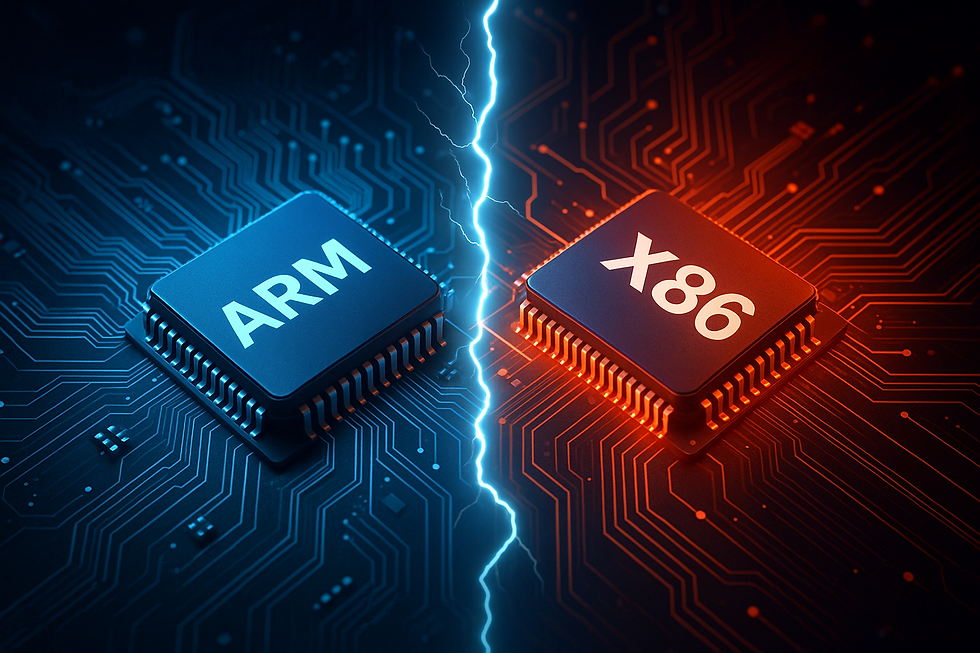Choosing the Right MCU for Your Project: A Comprehensive Guide for Startups and Engineers
- nellalin
- Aug 17
- 4 min read
Updated: Aug 24

Table of Contents
Why MCU Selection is Critical for Startups and Hardware Projects
How do you define MCU requirements (performance, memory, power)?
Which MCU connectivity options and peripheral interfaces matter most?
How do you choose an MCU with the right tools & ecosystem?
How should you evaluate MCU cost, availability, and supply risks?
What about reliability, certifications, and MCU lifecycle?
How do you scale from prototype to mass production with the right MCU?
What lessons can startups learn from MCU case studies?
Conclusion: Partnering with Rightway for Smart MCU Selection
Why MCU Selection is Critical for Startups and Hardware Projects
In today’s rapidly evolving hardware landscape, the microcontroller unit (MCU) is often the beating heart of your device. Whether you’re building an IoT sensor, a consumer gadget, a medical device, or an industrial control system, the MCU dictates performance, energy efficiency, connectivity options, and even long-term scalability.For startups, the MCU decision can make or break a product launch—selecting the wrong MCU can lead to months of delays, costly redesigns, and even missed market windows.
Industry research underscores this risk: according to EE Times, over 30% of hardware project delays in startups are linked to component re-selection, with MCUs topping the list. For early-stage companies, where every week counts, making a well-informed MCU choice is not just a technical decision—it’s a business-critical one.
1. How do you define MCU requirements (performance, memory, power)?
Before you even look at datasheets, start by clearly defining what your product needs to achieve. MCU selection should be requirements-driven, not brand-driven. Key factors to specify:
Application type: IoT, wearables, industrial control, medical device, consumer electronics
Processing needs: Clock speed, core architecture (ARM Cortex-M vs. RISC-V vs. proprietary cores)
Memory requirements: RAM, Flash, EEPROM capacity
Power consumption: Ultra-low-power for battery devices vs. higher performance for mains-powered systems
💡 Example: An IoT environmental sensor operating on a coin cell for two years will prioritize low-power modes, deep sleep currents, and wake-up times over raw processing power.
2. Which MCU connectivity options and peripheral interfaces matter most?
The MCU must be able to communicate with the outside world and peripheral components.
Common considerations:
I/O Interfaces: GPIO, UART, SPI, I2C, USB, CAN bus
Wireless options: Wi-Fi, Bluetooth Low Energy (BLE), LoRa, Zigbee
Expansion capability: Enough pins and buses for future product iterations
3. How do you choose an MCU with the right tools & ecosystem?
The right MCU is only as good as the tools and resources available to develop on it.
Evaluation points:
IDE & SDK support: Examples include STM32CubeIDE, MPLAB X, Arduino IDE, PlatformIO
Library availability: Ready-to-use peripheral drivers and protocol stacks
Community support: Large developer communities mean faster problem-solving
RTOS compatibility: FreeRTOS, Zephyr, or other lightweight OS integrations
📊 Tip from industry: According to Embedded.com, development ecosystem maturity can reduce time-to-market by up to 40%.
4. How should you evaluate MCU cost, availability, and supply risks?
An ideal MCU on paper is useless if it’s unavailable or prohibitively expensive at production scale.
Unit cost: Consider both prototype and mass production pricing
Supplier stability: Partner with vendors that have proven supply consistency
Lead times: In a post-2021 chip shortage world, long lead times are a major risk
Alternate sourcing: Is there a pin-compatible alternative?
📌 Case in point: The 2020–2022 global semiconductor shortage saw MCU lead times extend from 12 weeks to over 50 weeks for some models (Reuters). Startups with pre-validated alternatives avoided costly production halts.
5. What about reliability, certifications, and MCU lifecycle?
For products in regulated markets, MCU choice also hinges on compliance.
Operating temperature range: Industrial grade (-40°C to +85°C) vs. consumer grade (0°C to +70°C)
Certifications: CE, FCC, UL, ISO 13485 for medical devices
Lifecycle status: Avoid MCUs near End-of-Life (EOL)
Longevity guarantees: Some MCU families offer 10+ years of production availability
6. How do you scale from prototype to mass production with the right MCU?
A common pitfall for startups is choosing an MCU ideal for prototyping but ill-suited for scaling.
Checklist for scalability:
Prototype cost vs. production cost: Some MCUs have high unit costs in low volumes but drop significantly in bulk
Design for Manufacturing (DFM): Ensure PCB layout and peripherals can adapt to alternate MCUs if needed
Production ecosystem: Availability of local assembly houses, programming, and testing facilities
7. What lessons can startups learn from MCU case studies?
Failure scenario:A consumer electronics startup selected an MCU with cutting-edge wireless capabilities but failed to verify supply chain resilience. When lead times hit 60 weeks, they had to redesign the PCB around a different MCU, delaying launch by 9 months.
Success scenario: A medical device company chose a conservative MCU platform with two alternative, pin-compatible variants. When demand surged, they switched seamlessly to the higher-performance variant without PCB changes, scaling production from 1,000 to 50,000 units in six months.
Partnering with Rightway for Smart MCU Selection
Choosing the right MCU isn’t just about specs—it’s about balancing performance, power, cost, supply chain resilience, and long-term viability. Startups often lack the bandwidth to evaluate hundreds of MCU options, run DFM checks, and validate supply chains. This is where Rightway comes in.
As a hardware design and supply chain consulting partner, Rightway helps startups:
Translate business and technical goals into clear MCU requirements
Evaluate and shortlist MCUs based on both technical specs and market availability
Design for scalability from prototype to mass production
Leverage our Asia-based supplier network to ensure component availability and cost efficiency
💡 If you’re a startup founder or engineer facing the critical MCU decision, contact Rightway today—we’ll help turn your idea into a manufacturable, market-ready product, faster and with less risk.




Comments